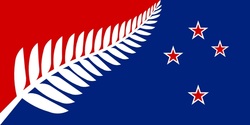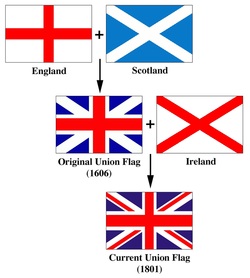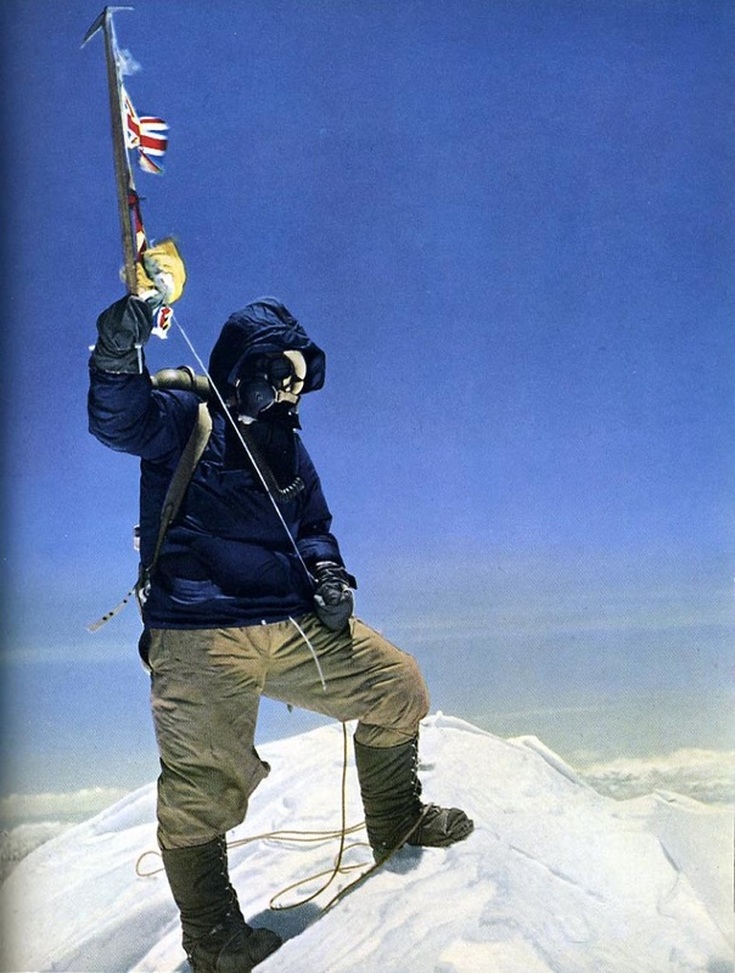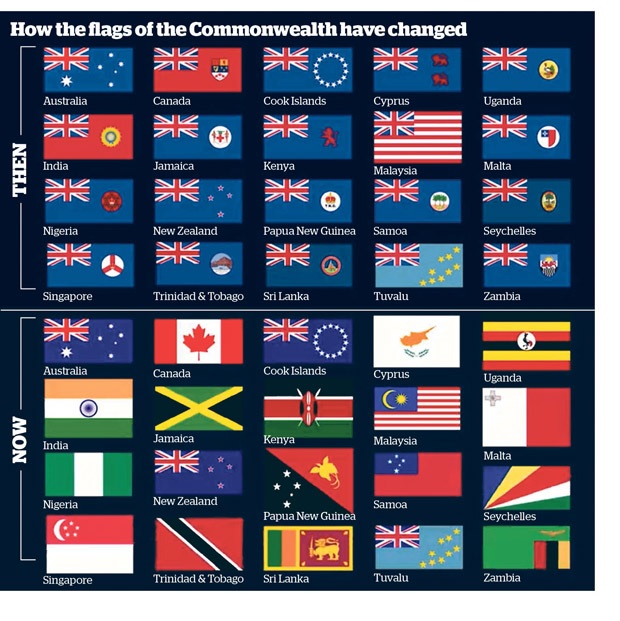SIR EDMUND HILLARY FLEW THE UNION JACK AT THE TOP OF MT EVEREST AND NOT THE NEW ZEALAND ENSIGN27/2/2016 NZ FLAG FACT NUMBER 27
Sir Edmund Hillary flew the Union Jack when he, along with Tenzing Norgay, completed the first successful ascent of Mount Everest on 29 May 1953 He and Norgay also raised two other flags—the United Nations and Nepalese flags. Hillary was part of the British Mount Everest Expedition led by the British colonel, John Hunt. News of Hillary and Norgay’s deed were conveyed to London in time for the world to be notified on the morning of the coronation of Queen Elizabeth II (2 June 1953). Eleven of the fifteen-strong mountaineering party that aided Hillary were from the United Kingdom and two were from New Zealand (Hillary and George Lowe), with Norgay and Sherpa Annullu having come from Nepal. British newspaper the Daily Express reported: ‘Everest was conquered by a New Zealander. What could be more joyfully appropriate than such a reminder that the spirit of old Britain has spread through the whole of the young Commonwealth?' Keith Holyoake, who became New Zealand’s prime minister for three months in 1957 and between 1960 and 1972, remarked that Hillary ‘has put the British race and New Zealand at the top of the world. And what a magnificent coronation present for the Queen. From New Zealand Flag Facts by historian Malcolm Mulholland. Read more at: http://www.silverfernflag.org/press/new-zealand-flag-facts-book
2 Comments
NZ FLAG FACT NUMBER 30
Fifty-three independent nations belong to the British Commonwealth. Four of these countries have never had the Union Jack on their flag, forty-four have removed the Union Jack from their flags, and Fiji is in the process of changing its flag, which will take the number to forty-five. No former British colony from Africa, Asia, the Caribbean or the Americas has the Union Jack on their flag any longer. The vast majority of British Commonwealth countries changed their flag during the 1960s when Britain attempted to join the EEC in order to secure trade benefits (France twice blocked Britain’s efforts in this regard). In 1973 the EEC finally accepted Britain as a member, after which New Zealand exports to the United Kingdom dropped dramatically. ‘There was no shadow of a doubt that the British application of 1961 [to join the EEC] presented a threat to New Zealand trade of the gravest dimensions. Prime Minister Holyoake summed it up when he said that the bid to join “raises questions probably the most serious New Zealand has had to face in times of peace”. However, despite calls from various New Zealanders to have the Union Jack erased from the New Zealand flag, this symbol has continued to feature on it. The only other independent Commonwealth Countries that still have the Union Jack on their national flags are Australia and Tuvalu, which, like New Zealand, are countries located in the Pacific Ocean. From New Zealand Flag Facts by historian Malcolm Mulholland. Read more at: http://www.silverfernflag.org/press/new-zealand-flag-facts-book  Please Share! silverfernflag.co.nz Newstalk ZB Media Statement. Hello Chris, thank you for approaching me and asking about a flag I designed for New Zealand. The flag was designed when I was a Massey University student in 2000, features a bold silver fern on the left hand side, and the Southern Cross to the right, the colours honour the red, white and blue colours seen on the present flag. If you are near a computer or a smart phone, the design can be viewed at www.silverfernflag.co.nz. A stylised Silver Fern, a New Zealand icon for well over 100 years, has been worn proudly by many generations of New Zealanders, from sports people, to firefighters and military personnel, The Silver Fern is an element of indigenous flora representing the growth of our nation. The multiple points of the fern leaf represents Aotearoa's peaceful multicultural society, a single fern leaf spreading upwards represents that we are all New Zealanders - one people - growing onward into the future. The Southern Cross, is a defining element in the present New Zealand Flag, it represents our geographic location in the antipodes. The Southern Cross is visible throughout the year in the southern night skies. It has been used as a navigational aid for centuries and it helped guide early settlers to our islands. Each star is also representative of the major island groups of New Zealand - North Island, South Island, Stewart Island, and the Chatham Islands. Red, is a significant colour to the NZ Maori, Red also represents the sacrifice made by all New Zealanders during wartime. White represents Aotearoa, Land of the Long White Cloud, The official Maori name for New Zealand. The colour also represents peace. Blue represents aumoana or the ocean that surrounds our island nation, over which all New Zealanders, or their ancestors, crossed to get to New Zealand. Rugby is not credited with the first wearing of the silver fern, according to Nelson historian Alan Turley. He said that while records were scant, an historic magazine cutting given to him by rugby commentator Keith Quinn, showed the fern being worn in a shooting, not rugby, match between New Plymouth's army garrison and the visiting Royal Navy. It was 1853, and the Royal Navy ship HMS Sparrow was anchored offshore in a visit to the fledgling town. While onshore, the navy men challenged the local army lads to a rifle shooting match at the Rewarewa rifle range. According to the clipping, the army men decided to pick silver fern tips growing near the range and pin them to their uniform shirt pockets as a sort of good luck talisman. The team won the shooting match and thereafter considered the fern a good-luck symbol, and so the tradition of the silver fern began. I appreciate that people fought wars under our present union-jack based flag, but what is lesser known is that soldiers, who made the ultimate sacrifice for New Zealand, lie buried in foreign fields beneath headstones bearing not the Union Jack, but the Silver Fern. Also the badges of many NZ army regiments feature the silver fern. Our Canadian commonwealth brothers-in-arms also had troops who fought under a British Red Ensign based flag, but in 1965 they changed their flag to the distinctive Maple Leaf Flag which we today associate with all things Canadian, however on remembrance days, the old flag is sometimes brought out and displayed too. If New Zealand changes its flag in the future I hope that on ANZAC and remembrance days we could honour our past soldiers in the same way as the Canadians do today. Both the Prime Minister and the Leader of the Opposition, are supporters of the Silver Fern. The fern is our icon, it's not just about the All-Blacks, it was on our one cent coins, it is now on our $1 coins too, and it features on our banknotes. It's been on our coat of arms since 1956, and lately it has become the official symbol of the NZ government abroad. It's now being painted on Air New Zealand's aircraft, and like Canada's maple leaf, the fern is a powerful symbol that says 'New Zealand'. It even features strongly on our passports. Speaking of passports I'm presently spokesman for a group called nzten.com, we are advocating for the return of ten year NZ passports. Amongst our 11,000 supporters are a few Knights and Dames, and the Hon Phil Goff. I believe that one day New Zealand will choose a new flag, the present flag suggests we are a subservient colony of the United Kingdom, not the proud independent nation of New Zealand that we have been, since the passing of the Statute of Westminster Adoption Act in 1947. I believe my design honours our past, but also looks forward to our future. Flag change could be 25 years away, but I hope that whichever design is chosen, it is done democratically, and that design chosen represents all New Zealanders. Kyle Lockwood. Melbourne, 12th August 2013. ENDS Chris Lynch <[email protected]> 11 August 2013.
Hi there, Kyle I host NewstalkZB's Canterbury Mornings programme (on New Zealand's second biggest radio market) We are discussing "changing the New Zealand flag" on the programme tomorrow Monday. We're on 100.1FM and streaming live at NewstalkZB.co.nz. I'm keen to get people's input on this issue and welcoming calls in from the public on (03) 340 10 98 or toll-free (inside the Canterbury region) on 0800 80 10 80. Talkback starts at 8.40AM. You're more than welcome to call in and please spread the word!! Best Wishes, Chris Lynch Chris Lynch Host Canterbury Mornings with Chris Lynch E: [email protected] W: newstalkzb.co.nz F: facebook.com/canterburymornings F: facebook.com/lynchinnz T: lynchonzb 14.01.2012 Scotland is making moves to become independent of the United Kingdom, and their independence could change the flag of the UK and other nations whose flags incorporate the Union Jack. If Scotland becomes fully independent of the UK, the Union Flag, or Union Jack, as it is commonly known, will become defunct, as the Union Jack incorporates the flags of England, Scotland, and Northern Ireland, but interestingly, not Wales, which is also a part of the UK. The Union Jack was created during the Union of the English and Scottish Crowns in 1606. Full Scottish independence would mean removal of the Cross of St Andrew from the Union Jack. This would have consequences for many nations, including Australia, New Zealand, the Cook Islands, Tuvalu, Niue, and the Republic of Fiji. These nations incorporate the Union Jack in the top left hand corner of their flags. If Scotland achieves full independence, these flags would need to change as a result, as would various state flags within Canada, Australia, and even the United States, as the State of Hawaii also has a Union Jack based flag. This may be the time for New Zealand to consider changing its flag, to something more relevant to our 21st century South Pacific nation, before events such as Scottish independence force change on us. Kyle Lockwood/silverfernflag.org  Evolution of the Union Flag From the Associated Press British Prime Minister David Cameron said Britain would allow Scotland to vote on the matter of independence but urged the country to make its intentions known “sooner rather than later.” Britain's government confirmed Tuesday it would happily offer Scotland the powers it needs to sever centuries-old ties to England. Prime Minister David Cameron's government said it would sweep away legal hurdles to allow the Scots a vote on whether their country should become independent for the first time since the 18th Century Act of Union, which united Scotland with England to create Great Britain. But in return, Cameron — who opposes any breakup of the United Kingdom, which also includes Wales and Northern Ireland — is urging Scotland to make its intentions clear "sooner rather than later." He claims investors are becoming increasingly wary of Scottish leader Alex Salmond's plans to delay a vote for several years, damaging Britain's economy. Salmond, head of Scotland's semiautonomous government, has long championed independence to allow the country greater control over lucrative oil and natural gas reserves in the North Sea. "This is a huge decision for Scotland. This is potentially the biggest decision we have made as a nation for 300 years," Salmond said Tuesday, while on a tour of an oil facility in Dyce, eastern Scotland. He insisted that Cameron should not take any role in setting out the timetable for the crucial referendum. "We are not going to be stampeded and dragooned by a Tory prime minister in London," Salmond said. Since Scotland voted in favour of a domestic legislative body in 1997, its parliament has had autonomy over education, health and justice and can make minor alterations to income tax. For now, London retains primacy on all matters relating to Britain as a whole — including defence, energy and foreign relations. There had been speculation the poll would be held in 2014, when nationalist sentiment could be at a high as the city of Glasgow hosts the Commonwealth Games and Scots mark the 700th anniversary of the battle of Bannockburn, a key military victory over England. Salmond's party has said that if it succeeds in winning independence, Scotland would —for now at least — keep Queen Elizabeth II as head of state and retain the British pound as its currency. Kirsty Wigglesworth/Associated Press |
MEDIAArchives
December 2022
Categories
All
|




 RSS Feed
RSS Feed
